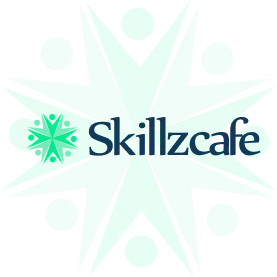Overview of Course
Designing Cisco Enterprise Networks (ENSLD) v1.1 is a course that teaches individuals how to design and implement advanced enterprise network solutions using Cisco technologies. The course covers a wide range of topics such as virtualization, network design, security, and automation, among others.
Course Highlights

Learn how to design and implement advanced enterprise network solutions

Develop a deep understanding of network design, virtualization, security, and automation

Hands-on labs to practice <br /><br /><br />
Key Differentiators
Personalized Learning with Custom Curriculum
Training curriculum to meet the unique needs of each individual
Trusted by over 100+ Fortune 500 Companies
We help organizations deliver right outcomes by training talent
Flexible Schedule & Delivery
Choose between virtual/offline with Weekend options
World Class Learning Infrastructure
Our learning platform provides leading virtual training labs & instances
Enterprise Grade Data Protection
Security & privacy are an integral part of our training ethos
Real-world Projects
We work with experts to curate real business scenarios as training projects
Skills You’ll Learn
Network design principles and models
Virtualization technologies such as VLANs, VRFs, and VPNs
Network automation using Cisco DNA Center
Network security principles and implementation
Network services such as QoS, multicast, and high availability
Training Options



1-on-1 Training
Access to live online classes
Flexible schedule including weekends
Hands-on exercises with virtual labs
Session recordings and learning courseware included
24X7 learner support and assistance
Book a free demo before you commit!

Corporate Training
Everything in 1-on-1 Training plus
Custom Curriculum
Extended access to virtual labs
Detailed reporting of every candidate
Projects and assessments
Consulting Support
Training aligned to business outcomes
 Unlock Organizational Success through Effective Corporate Training: Enhance Employee Skills and Adaptability
Unlock Organizational Success through Effective Corporate Training: Enhance Employee Skills and Adaptability- Choose customized training to address specific business challenges and goals, which leads to better outcomes and success.
- Keep employees up-to-date with changing industry trends and advancements.
- Adapt to new technologies & processes and increase efficiency and profitability.
- Improve employee morale, job satisfaction, and retention rates.
- Reduce employee turnovers and associated costs, such as recruitment and onboarding expenses.
- Obtain long-term organizational growth and success.
Course Reviews
Curriculum
- Overview of EIGRP Routing Protocol
- Configuring EIGRP on Routers
- EIGRP Metrics and Route Selection
- EIGRP Route Filtering and Redistribution
- EIGRP Summarization
- EIGRP Stub Networks
- Overview of OSPF Routing Protocol
- Configuring OSPF on Routers
- OSPF Metrics and Route Selection
- OSPF Route Filtering and Redistribution
- OSPF Summarization
- OSPF Stub Networks
- Overview of IS-IS Routing Protocol
- Configuring IS-IS on Routers
- IS-IS Metrics and Route Selection
- IS-IS Route Filtering and Redistribution
- IS-IS Summarization
- IS-IS Stub Networks
- Gathering Business Requirements
- Determining Network Requirements
- Designing Logical and Physical Topology
- Selecting Routing Protocols
- Designing WAN and Internet Connectivity
- Designing Security and QoS
- Overview of BGP Routing Protocol
- Configuring BGP on Routers
- BGP Route Selection and Redistribution
- BGP Peer Groups and Communities
- BGP Path Attributes
- BGP Scaling Techniques
- BGP Address Families
- BGP Multiprotocol Extensions
- BGP Address Families Configuration
- BGP Next Hop Address Tracking
- BGP Communities Attribute
- Gathering Business Requirements
- Determining Network Requirements
- Designing Logical and Physical Topology
- Designing BGP Routing and Redundancy
- Designing WAN and Internet Connectivity
- Designing Security and QoS
- Campus LAN Design Principles
- Hierarchical Network Design
- Layer 2 and Layer 3 Campus Architectures
- Campus LAN Services and Security
- Virtualization Technologies
- Spanning Tree Protocol (STP) and Variants
- EtherChannel and Link Aggregation Control Protocol (LACP)
- VLANs and VLAN Trunking Protocol (VTP)
- Rapid PVST+ and Multiple Spanning Tree Protocol (MSTP)
- FlexLinks and Resilient Ethernet Protocol (REP)
- Gathering Business Requirements
- Determining Network Requirements
- Designing Logical and Physical Topology
- Designing Layer 2 and Layer 3 Campus Architectures
- Designing Campus LAN Services and Security
- Designing Virtualization Technologies
- Routing Protocols for Layer 3 Campus
- First Hop Redundancy Protocols (FHRP)
- IP Addressing and Summarization
- Implementing Access Control Lists (ACLs)
- Configuring Quality of Service (QoS)
- Cisco SD-Access Overview
- Underlay and Overlay Networks
- Fabric Nodes and Roles
- Cisco DNA Center and Assurance
- Fabric Authentication and Encryption
- Cisco SD-Access Fabric Design Principles
- Fabric Domains and Sites
- Fabric Virtual Networks (VNs)
- IP Addressing and VLANs
- High Availability and Redundancy
- Understanding the deployment models and site design considerations
- Understanding the hierarchical design approach
- Understanding the Access Layer design
- Understanding the distribution layer design
- Understanding the core layer design
- Understanding the Redundancy and high availability options
- Understanding the enterprise requirements
- Designing the enterprise campus fabric
- Configuring Cisco DNA Center for enterprise connectivity
- Configuring fabric border nodes, control plane, and data plane
- Configuring Virtual networks and fabric domains
- Configuring the fabric domain, sites, and subnets
- Understanding Service Provider VPN Design
- Understanding MPLS VPN Architecture
- Understanding the L3VPN design
- Understanding the L2VPN design
- Understanding the PE-CE Routing protocols
- Understanding the MPLS VPN QoS Design
- Understanding Enterprise VPN Design
- Understanding the Site-to-Site VPN Design
- Understanding the Remote Access VPN Design
- Understanding the VPN Technology Selection
- Understanding the VPN Security considerations
- Understanding the WAN Resiliency Design
- Understanding the WAN Redundancy and Failover options
- Understanding the WAN Link Load Balancing
- Understanding the WAN QoS Design
- Understanding the WAN Traffic Engineering
- Understanding the enterprise WAN requirements
- Designing the enterprise WAN topology
- Configuring WAN redundancy and failover options
- Configuring WAN link load balancing
- Configuring WAN QoS and Traffic Engineering
- Understanding the SD-WAN Design considerations
- Understanding the SD-WAN Components
- Understanding the Transport Nodes and Controllers
- Understanding the Overlay and Underlay Network
- Understanding the SD-WAN Security options
- Understanding the SD-WAN deployment models
- Understanding the High Availability and Redundancy options
- Understanding the SD-WAN Fabric and Topology
- Understanding the SD-WAN Policy-based Routing and Centralized Policies
- Understanding the SD-WAN Routing Design
- Understanding the SD-WAN Routing Protocols
- Understanding the SD-WAN Path Selection
- Understanding the SD-WAN High Availability and Failover
- Understanding the enterprise SD-WAN requirements
- Designing the enterprise SD-WAN topology
- Configuring SD-WAN High Availability and Redundancy options
- Configuring SD-WAN Routing and Path Selection
- Understanding QoS Design Considerations
- Understanding QoS Models
- Understanding the Classification, Marking, and Policing Mechanisms
- Understanding the Queueing and Scheduling Mechanisms
- Understanding the Congestion Avoidance Mechanisms
- Understanding LAN and WAN QoS Design
- Understanding the QoS Requirements
- Understanding the QoS
- Understanding the business requirements of an enterprise network
- Designing QoS policies that align with the business requirements
- Identifying the critical traffic flows in the network
- Developing QoS policies for the identified traffic flows
- Configuring and verifying QoS policies in the network
- Testing and validating the QoS policies
- Understanding the basics of multicast and its advantages
- Understanding the PIM-SM protocol and its operations
- Configuring and verifying PIM-SM in a network
- Understanding the role of the Rendezvous Point (RP) in PIM-SM
- Understanding the concept of multicast distribution trees
- Understanding the need for Rendezvous Point (RP) redundancy
- Designing RP distribution solutions for different network topologies
- Understanding the concept of Anycast RP
- Configuring and verifying RP distribution solutions
- Understanding the IPv4 addressing scheme
- Designing IPv4 address plans for different network topologies
- Understanding the concept of subnetting and supernetting
- Designing IP addressing for different network services such as DHCP, DNS, and NAT
- Understanding the need for IPv6
- Understanding the differences between IPv4 and IPv6
- Understanding the IPv6 addressing scheme
- Understanding the IPv6 header format and packet structure
- Understanding the concepts of IPv6 autoconfiguration, neighbor discovery, and routing protocols
- Understanding the deployment options for IPv6
- Configuring and verifying IPv6 on network devices
- Understanding the dual-stack approach to IPv6 deployment
- Understanding IPv6 migration techniques
- Understanding the business requirements of an enterprise network
- Designing an IPv6 addressing plan that aligns with the business requirements
- Identifying the critical IPv6 traffic flows in the network
- Developing IPv6 routing and switching designs for the identified traffic flows
- Configuring and verifying IPv6 in the network
- Testing and validating the IPv6 network
- Understanding the concept of network APIs and protocols
- Understanding the role of APIs in network automation
- Understanding the different network APIs and protocols such as NETCONF, RESTCONF, and YANG
- Understanding the concept of Model-Driven Telemetry (MDT)
- Understanding the YANG data modeling language
- Understanding the NETCONF and RESTCONF network protocols
- Understanding the use of YANG, NETCONF, and RESTCONF in network automation
- Understanding the concept of Model-Driven Telemetry (MDT)
- Understanding the lab environment and equipment
- Performing basic network device configuration tasks
- Configuring LAN and WAN QoS parameters
- Configuring multicast and PIM-SM
- Designing and configuring an IPv4

 Meet the instructor and learn about the course content and teaching style.
Meet the instructor and learn about the course content and teaching style. Make informed decisions about whether to enroll in the course or not.
Make informed decisions about whether to enroll in the course or not. Get a perspective with a glimpse of what the learning process entails.
Get a perspective with a glimpse of what the learning process entails.
Description

Target Audience:
- Network architects
- Network engineers
- Network designers
- IT managers

Prerequisite:
- CCNA certification or equivalent knowledge and experience
- Understanding of basic network design principles and models

Benefits of the course:
- Enhance your knowledge and skills in designing and implementing enterprise networks
- Gain hands-on experience with Cisco technologies
- Learn network automation using Cisco DNA Center
- Increase your career opportunities in the field of networking

Exam details to pass the course:
- Exam code: 300-420 ENSLD
- Exam duration: 90 minutes
- Number of questions: 60-70
- Exam format: Multiple choice

Certification path:
- CCNP Enterprise certification is awarded after passing the Designing Cisco Enterprise Networks (ENSLD) exam
- CCIE Enterprise Infrastructure certification is awarded after passing the CCIE Enterprise Infrastructure lab exam

Career options after doing the course:
- Network Architect
- Network Engineer
- Network Designer
- IT Manager
Why should you take this course from Skillzcafe:

Experienced instructors with industry knowledge
Hands-on labs to practice and apply the concepts learned in the course
Course material aligned with Cisco certification exam objectives
Flexible learning options with online and classroom training
FAQs
The course is a 5-day training program.
Yes, the course material is aligned with the Cisco certification exam objectives.
Yes, CCNA certification or equivalent knowledge and experience is required for the course.
The certification exam is a multiple-choice format with a duration of 90 minutes.
Completing this course can lead to career opportunities such as network architect, network engineer, network designer, and IT manager.

Provide your workforce with top-tier corporate training programs that empower them to succeed. Our programs, led by subject matter experts from around the world, guarantee the highest quality content and training that align with your business objectives.
-
1500+
Certified Trainers
-
200+
Technologies
-
2 Million+
Trained Professionals
-
99%
Satisfaction Score
-
2000+
Courses
-
120+
Countries
-
180+
Clients
-
1600%
Growth




































 Live Chat
Live Chat